Podcasts and social media platforms are abuzz these days with life hacks—clever ways to help manage time and complete tasks more efficiently.
But that’s nothing new for electric cooperatives, who since their beginning have sought innovative ways to solve problems and widely share those solutions with other co-ops.
“Definitely for small co-ops, any kind of innovation or shortcut helps, because so many staff are wearing multiple hats,” says Mary Pat Paris, who as NRECA’s vice president of administration also oversees membership services. “At the same time, it’s not just limited to small co-ops. Large co-ops can take advantage of some of these ideas as well.”
Touchstone Energy® Cooperative has for several years featured an “Admire and Acquire” column in their monthly updates with “job hacks” submitted by members. Now they’re turning those ideas into a searchable database with an easy-to-use submission form.
“It is a natural progression from the knowledge base that we’ve been curating for more than a decade,” says Jana Adams, Touchstone Energy executive director. “These are quick reads with contact information to increase networking and sharing among Touchstone Energy members.”
Lori Everhart, Touchstone’s senior manager of communications and member relations, says demand for such tips “really took off during the pandemic’s early months.”
“More than ever, our members craved resources to support their communities and employees when life as we knew it was changing,” she says. “When our members are doing something unique and successful in their community, they are eager to share.”
Other sources of inspiration include the tools and tips section of NRECA’s Young Adult Member Engagement initiative on cooperative.com and the monthly Power Hour webinar with advice on a variety of topics from co-op experts.
The underlying theme, of course, is the sixth cooperative principle, says Paris: cooperation among cooperatives.
“I’m never surprised at how willing co-ops are to help each other,” she says.
Read on for some great co-op tips and hacks.
(NOTE: Please consult with your co-op’s attorney before implementing any new programs.)
[panel panel-style="panel" color="secondary" title="Innovative%20Incentives"]
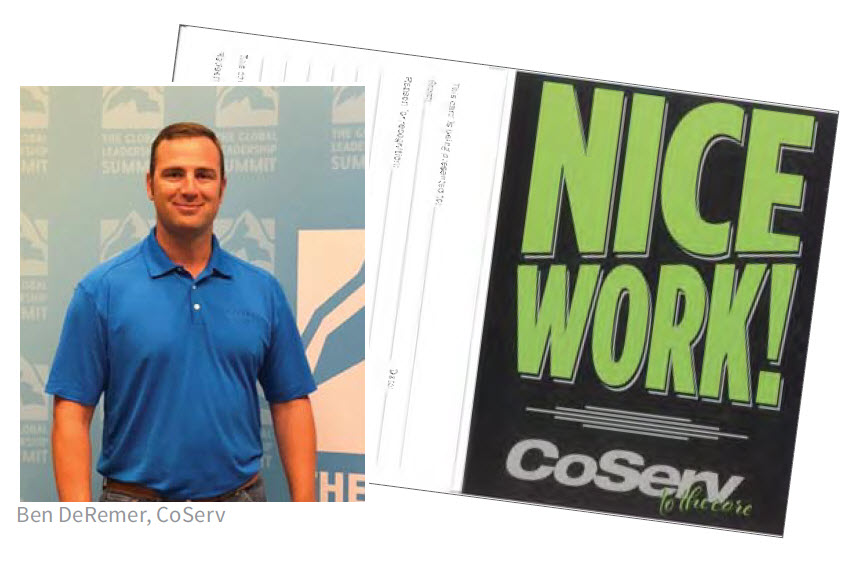 When you want to incentivize positive behavior, on-the-spot rewards can be effective. In Colorado, San Miguel Power Association’s Paul Enstrom awards $20 gift cards to employees modeling safe behavior. In Texas, CoServ’s Ben DeRemer rewards his crews with cards redeemable for one hour of paid time off.
When you want to incentivize positive behavior, on-the-spot rewards can be effective. In Colorado, San Miguel Power Association’s Paul Enstrom awards $20 gift cards to employees modeling safe behavior. In Texas, CoServ’s Ben DeRemer rewards his crews with cards redeemable for one hour of paid time off.
Contact: Paul Enstrom, safety and regulatory compliance coordinator, San Miguel Power Association, Nucla, Colorado, paul@smpa.com; Ben DeRemer, director of job training and safety, CoServ Electric, Corinth, Texas, bderemer@coserv.com. [/panel]
[panel panel-style="panel" color="secondary" title="Must-See%20TV"]
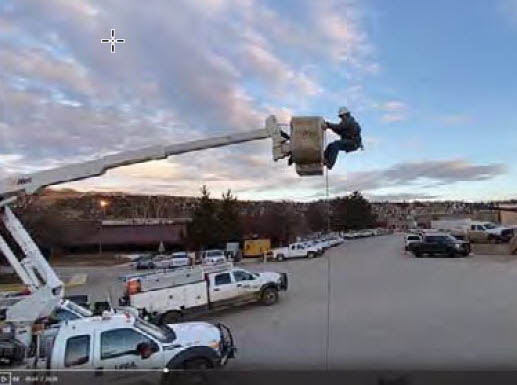
In Colorado, safety is must-see TV.
La Plata Electric Association safety meetings are turned into engaging safety videos, which Hillary Knox says notch 100% viewership. Also in digital format are monthly inspections for fire extinguishers, first-aid kits, vehicles, as well as tailboard forms.
Contact: Hillary Knox, vice president of member experience, La Plata Electric Association, Durango, Colorado,
hknox@lpea.coop. [/panel]
[panel panel-style="panel" color="secondary" title="Safety%20Playbook"]

Every two weeks, line superintendents and operations managers at
Minnesota co-ops receive the latest “Safety Playbook” from the
statewide association. It’s a collection of stories and photos of safety incidents and positive behavior sent anonymously by lineworkers that’s “been a useful tool” for managers during morning meetings, says creator Lidia Dilley Jacobson, who enters contributors in quarterly and annual drawings as incentives. “It’s a good way to share what’s happening around our state and something that’s not always focused on incidents.”
Contact: Lidia Dilley Jacobson, director of safety and loss control, Minnesota Rural Electric Association, Maple Grove, Minnesota, lidia@mrea.org. [/panel]
[panel panel-style="panel" color="secondary" title="Good%20Catch"]
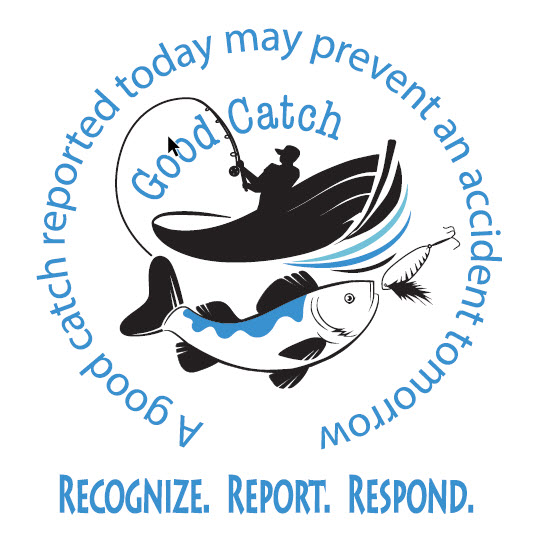 Cooperative Energy’s Good Catch program encourages safe behavior in the workplace by “asking employees to be proactive and report identified hazards before they cause an incident,” says the G&T’s Patsy Horan. Employees reporting “good catches” receive positive feedback and incentives; managers compile data into monthly reports that identify trends and opportunities for improvement. “Open reporting encourages a learning environment that everyone can benefit from and ultimately creates a safer workplace,” Horan says.
Cooperative Energy’s Good Catch program encourages safe behavior in the workplace by “asking employees to be proactive and report identified hazards before they cause an incident,” says the G&T’s Patsy Horan. Employees reporting “good catches” receive positive feedback and incentives; managers compile data into monthly reports that identify trends and opportunities for improvement. “Open reporting encourages a learning environment that everyone can benefit from and ultimately creates a safer workplace,” Horan says.
[/panel]
[panel panel-style="panel" color="secondary" title="Confined-Space%20Rodeo"]
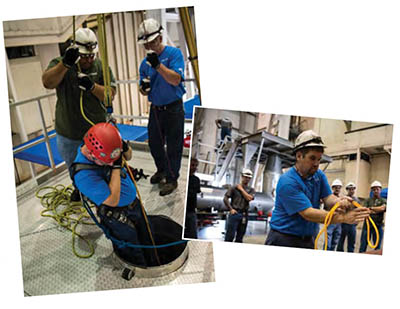
Why should lineworkers have all the rodeo fun? This idea, an NRECA Management Internship Program final project, comes from the safety team at
East Kentucky Power Cooperative. The G&T’s confined-space rodeo gives operators, welders, mechanics and other plant workers a chance to practice safety skills and build camaraderie at the same time. The Kentucky State Fire Commission helps run and judge the event. Events include administering first aid, knot-tying and confined-space rescue.
Contact: Mike Willoughby, safety, security and facilities manager, East Kentucky Power Cooperative, Winchester, Kentucky,
mike.willoughby@ekpc.coop [/panel]
[panel panel-style="panel" color="secondary" title="STILL%20Standing"]
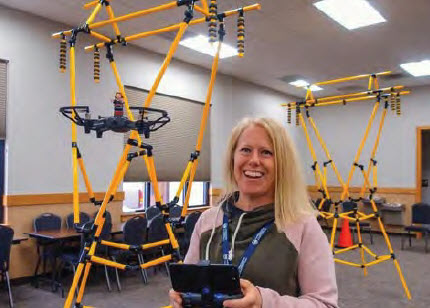 At Flathead Electric Cooperative, STILL stands for Stop, Think, Inquire, Listen and Learn. Amanda Opp recently devised this to spend one-on-one time with new direct reports. That time “helps us organize and differentiate between what is urgent and what is important. We pretty much can solve the major issues in that half-hour,” she says.
At Flathead Electric Cooperative, STILL stands for Stop, Think, Inquire, Listen and Learn. Amanda Opp recently devised this to spend one-on-one time with new direct reports. That time “helps us organize and differentiate between what is urgent and what is important. We pretty much can solve the major issues in that half-hour,” she says.
Contact: Amanda Opp, right-of-way supervisor, Flathead Electric Cooperative, Kalispell, Montana, a.opp@flathead.coop. [/panel]
[panel panel-style="panel" color="secondary" title="Wires%20Over%20Wildlife"]
This collaboration between landowners, state conservation officials and utilities was a Management Internship Program project of Mike Collier at M&A Electric Power Cooperative. Wires Over Wildlife originated in the Missouri Department of Conservation and reimburses owners to care for land under power lines on transmission easements. The goal is to enlist help from stakeholders to enhance rights-of-way for wildlife habitat. The effort “checks multiple boxes such as cost savings, habitat building, increased member satisfaction and reduced right-of-way complaints,” says Gary Pfann, NRECA’s director of executive and staff education.
Contact: Mike Collier, right-of-way agent, M&A Electric Power Cooperative, Poplar Bluff, Missouri, mcollier@maelectric.com. [/panel]
[panel panel-style="panel" color="secondary" title="AMI%20Data"]
As more co-ops are adopting advanced metering infrastructure (AMI), they are becoming flooded with data—and faced with the question of what to do with it all. Poudre Valley REA’s Troy Richter manages a system that analyzes data to root out sources of power blinks, which seem harmless but could obscure larger equipment problems and, ultimately, result in outages. Off-the-shelf software creates a dashboard that interfaces with the data and pinpoints blinks. “If they’re concentrated in an area, we can go out and look for the causes,” Richter says. His project stems from a co-op strategic initiative to capitalize on AMI-generated data by using it to improve reliability and service to members.
Contact: Troy Richter, systems engineer supervisor, Poudre Valley REA, Fort Collins, Colorado, trichter@pvrea.coop. [/panel]
[panel panel-style="panel" color="secondary" title="Member%20Updates"]
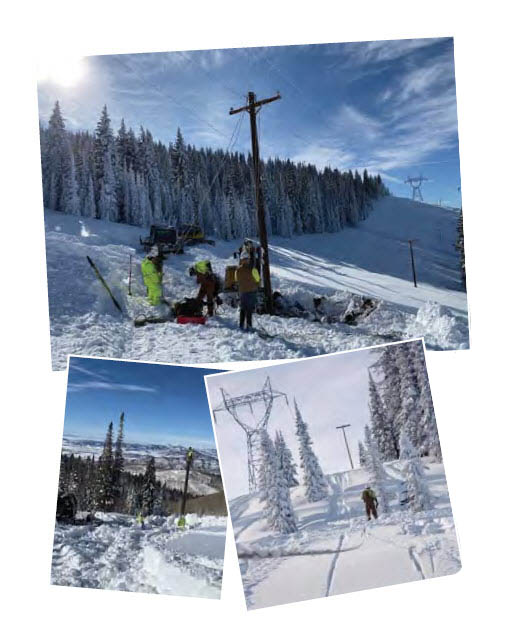
Yampa Valley Electric Association sends an auto-generated message to members reporting outages on its Facebook page instead of to dispatchers. The message provides the co-op’s outage reporting phone number rather than the co-op responding to hundreds of Facebook messages. “We never want a member thinking they have reported an outage and are sitting in the dark and the cold because our 24/7/365 dispatch has not heard about it,” says YVEA’s Carly Davidson.
Contact: Carly Davidson, public relations specialist, Yampa Valley Electric Association, Steamboat Springs, Colorado,
cdavidson@yvea.com. [/panel]
[panel panel-style="panel" color="secondary" title="The%20Wire"]
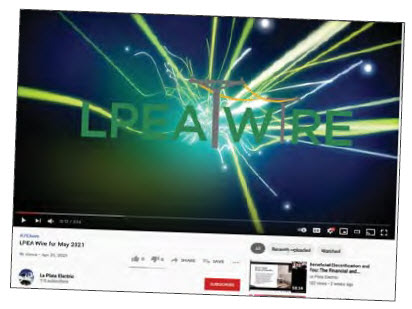 In Colorado, La Plata Electric Association informs members of the latest news with a monthly video series, LPEA Wire, on its YouTube channel. “Your Outage Recap” and “Your Construction Alerts” are email alerts sent directly to members.
In Colorado, La Plata Electric Association informs members of the latest news with a monthly video series, LPEA Wire, on its YouTube channel. “Your Outage Recap” and “Your Construction Alerts” are email alerts sent directly to members.
Contact: Hillary Knox, vice president of member experience, La Plata Electric Association, Durango, Colorado, hknox@lpea.coop. [/panel]
[panel panel-style="panel" color="secondary" title="Ice%20Buildup"]
 This tip from South Central Power’s Alan Amos prevents ice buildup on lines, a safety hazard, and prevents a second wave of outages caused by melting ice. “You need nothing more than a handline block and a straight line. First, attach a straight line to a handline block or a stringing block and then pull it along the conductor to remove ice. This is more effective than slapping it with your Extendo.”
This tip from South Central Power’s Alan Amos prevents ice buildup on lines, a safety hazard, and prevents a second wave of outages caused by melting ice. “You need nothing more than a handline block and a straight line. First, attach a straight line to a handline block or a stringing block and then pull it along the conductor to remove ice. This is more effective than slapping it with your Extendo.”
[/panel]
[panel panel-style="panel" color="secondary" title="Pandemic%20Desks"]
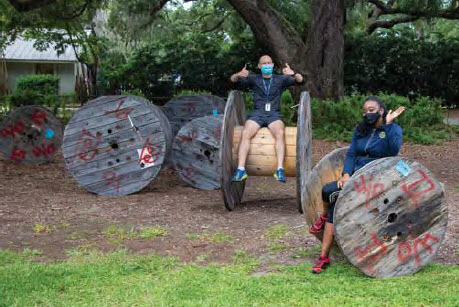
When South Carolina students had to meet in outdoor classrooms to comply with pandemic safety protocols,
Berkeley Electric Cooperative donated its leftover cable reels for use as outdoor desks. The co-op donated 55 reels, which also cuts down on disposal fees.
Contact: Micah Ponce, communications and media specialist, Berkeley Electric Cooperative, Moncks Corner, South Carolina,
micahp@bec.coop. [/panel]
[panel panel-style="panel" color="secondary" title="Paperless%20Incentives"]
In Colorado, La Plata Electric Association gives member services representatives incentives for recruiting members to participate in co-op promotions, such as paperless billing. Past incentives: homemade gourmet meal, gift cards from local businesses and team lunches paid by the co-op.
Contact: Hillary Knox, vice president of member experience, La Plata Electric Association, Durango, Colorado, hknox@lpea.coop. [/panel]
[panel panel-style="panel" color="secondary" title="Social%20Media%20Calendar"]
 When
Grundy REC’s Allyson Miller started at the Iowa co-op in August 2020, the executive assistant “had to find ways to get and stay organized, so I wasn’t overwhelmed by the content. Not only am I new to the co-op, but I’m new to the co-op world in general.” One hack is a monthly social media editorial calendar, color coded by information source, which she updates each time she receives a newsletter. “What’s nice is I can have a plan for months out and schedule posts to push out when I have free time.” Miller also organizes story ideas for the co-op’s print newsletter and Facebook feed in monthly file folders. “As soon as I receive an email with content ideas, I print and put in there. Then, in future years, I have a library of what I posted previously.”
When
Grundy REC’s Allyson Miller started at the Iowa co-op in August 2020, the executive assistant “had to find ways to get and stay organized, so I wasn’t overwhelmed by the content. Not only am I new to the co-op, but I’m new to the co-op world in general.” One hack is a monthly social media editorial calendar, color coded by information source, which she updates each time she receives a newsletter. “What’s nice is I can have a plan for months out and schedule posts to push out when I have free time.” Miller also organizes story ideas for the co-op’s print newsletter and Facebook feed in monthly file folders. “As soon as I receive an email with content ideas, I print and put in there. Then, in future years, I have a library of what I posted previously.”
[/panel]
[panel panel-style="panel" color="secondary" title="Making%20Complex%20Manageable"]
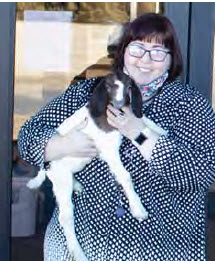 “I’m an enthusiastic proponent of any kind of automation, and I love a challenge to make something complex more manageable,” says Prairie Land Electric Cooperative’s Deborah Anderson. For example, when placing several newspaper ads, she uses master pages or templates to keep the look of each order consistent and reduce errors. She also has a method to save time on directory updates. “I keep a spreadsheet with the current employees and their essential information. Then, when someone retires or we get a new employee, I can do a quick data merge to automatically lay out those pages in the directory and just swap them out. It sure beats dragging all those images around one at a time.”
“I’m an enthusiastic proponent of any kind of automation, and I love a challenge to make something complex more manageable,” says Prairie Land Electric Cooperative’s Deborah Anderson. For example, when placing several newspaper ads, she uses master pages or templates to keep the look of each order consistent and reduce errors. She also has a method to save time on directory updates. “I keep a spreadsheet with the current employees and their essential information. Then, when someone retires or we get a new employee, I can do a quick data merge to automatically lay out those pages in the directory and just swap them out. It sure beats dragging all those images around one at a time.”
[/panel]
[panel panel-style="panel" color="secondary" title="Off-Boarding%20Checklist"]
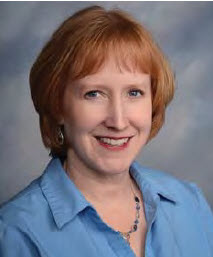 When an employee departs Salem Electric, Heidi Hand uses an “off-boarding” checklist to track exit procedures, such as return of office property and termination of network access. The employee’s supervisor and personnel in accounting, IT and other departments review and sign off on the list. “It’s a reminder of what they need to take care of a checklist of all the tasks they need to complete related to that person leaving,” Hand says.
When an employee departs Salem Electric, Heidi Hand uses an “off-boarding” checklist to track exit procedures, such as return of office property and termination of network access. The employee’s supervisor and personnel in accounting, IT and other departments review and sign off on the list. “It’s a reminder of what they need to take care of a checklist of all the tasks they need to complete related to that person leaving,” Hand says.
Contact: Heidi Hand, HR coordinator, Salem Electric, Salem, Oregon, hand@salemelectric.com. [/panel]
[panel panel-style="panel" color="secondary" title="Planning%20Dashboard"]
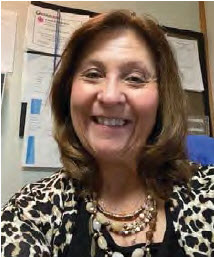 When Susan Golwitzer started handling HR for Prairie Energy Cooperative, one of her priorities was setting up a system to inform workforce succession planning. After gathering and analyzing data in several areas, she put her findings into a dashboard that charts past trends and projects future hiring needs to align with the co-op’s goals. “This did come up in our strategic planning session, so when I did this project it was good preplanning for future needs of the co-op,” she says.
When Susan Golwitzer started handling HR for Prairie Energy Cooperative, one of her priorities was setting up a system to inform workforce succession planning. After gathering and analyzing data in several areas, she put her findings into a dashboard that charts past trends and projects future hiring needs to align with the co-op’s goals. “This did come up in our strategic planning session, so when I did this project it was good preplanning for future needs of the co-op,” she says.
[/panel]
[panel panel-style="panel" color="secondary" title="Governance%20Portal"]
In Colorado, La Plata Electric Association created a monthly dashboard to update board directors on progress made on initiatives identified in the co-op’s five-year operational plan. Directors access the updates via an online portal.
Contact: Hillary Knox, vice president of member experience, La Plata Electric Association, Durango, Colorado, hknox@lpea.coop. [/panel]
[panel panel-style="panel" color="secondary" title="Voting%20Flexibility"]
Platte-Clay Electric Cooperative’s Jennifer Grossl was researching state laws and co-op bylaws on online voting, but she went from theory to practice when the pandemic forced the cancellation of the live annual meeting—where board elections typically took place. In August 2020, for the first time, a record number of members cast votes—by paper ballots or electronically with the help of ARC Media. This year, directors have proposed changing the co-op’s bylaws to allow greater voting flexibility.
Contact: Jennifer Grossl, manager, communications and marketing, Platte-Clay Electric Cooperative, Kearney, Missouri, jenniferg@pcec.coop. [/panel]
[panel panel-style="panel" color="secondary" title="Pandemic%20Bill%20Assistance"]
 Last year, past-due bills at Adams Electric Cooperative were at an all-time high. In October, Adams waived penalties and additional fees for members and instead helped those requesting extensions and assistance to pay down outstanding balances. Members with past-due balances of 60 or 90 days received a flyer. Those contacting the co-op about the flier got a $50 bill credit; members paying up to 50% of their outstanding balance got a dollar-for-dollar match from the co-op’s Project Helping Hand member assistance program. Fliers went to about 750 members, and about 340 responded. Project Helping Hand provided about $50,000 in matches.
Last year, past-due bills at Adams Electric Cooperative were at an all-time high. In October, Adams waived penalties and additional fees for members and instead helped those requesting extensions and assistance to pay down outstanding balances. Members with past-due balances of 60 or 90 days received a flyer. Those contacting the co-op about the flier got a $50 bill credit; members paying up to 50% of their outstanding balance got a dollar-for-dollar match from the co-op’s Project Helping Hand member assistance program. Fliers went to about 750 members, and about 340 responded. Project Helping Hand provided about $50,000 in matches.
Contact: Kami Noel, communications/member relations coordinator, Adams Electric Cooperative, Gettysburg, Pennsylvania, kamin@adamsec.coop. [/panel]
[panel panel-style="panel" color="secondary" title="Tracking%20Progress"]
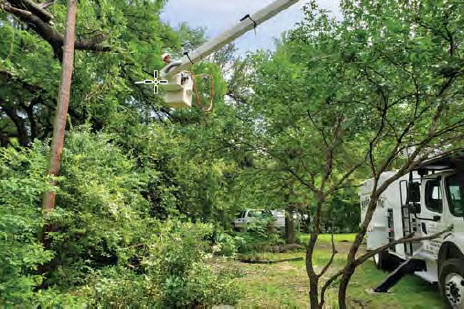
Here’s how line crews at
Tri-County Electric Cooperative track progress made on work orders and right-of-way statistics. For work orders, crew leaders create a report that compares the number of assignments against the number of digital tailboard forms submitted. For ROW statistics, a report tracks monthly expenditures on different trim types, footages and the cost-per-foot of different work in each district.
Contact: Nichole Eshbaugh, chief technology officer, Tri-County Electric Cooperative, Aledo, Texas,
neshbaugh@tcectexas.com. [/panel]
[panel panel-style="panel" color="secondary" title="ID%E2%80%99ing%20Energy-Sapping%20Devices"]
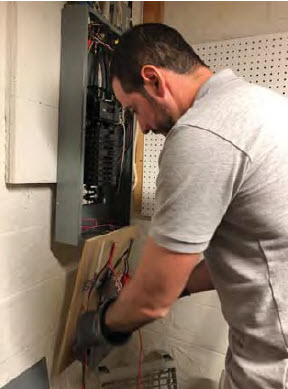 When a Tipmont REMC member calls with a high bill complaint, the Indiana co-op’s home energy adviser uses a home energy monitor that detects energy-sapping devices by identifying their electrical signals. Once installed in a home’s electrical panel or meter base, the monitor can generate data within two to five minutes. “No need to read amperage off individual circuits, toggle them on and off and then run around the house to see what’s still running anymore. You can see everything that’s running and their consumption right there on your mobile device,” says the co-op’s Tolu Omotoso. The co-op also provides rebates to members purchasing one.
When a Tipmont REMC member calls with a high bill complaint, the Indiana co-op’s home energy adviser uses a home energy monitor that detects energy-sapping devices by identifying their electrical signals. Once installed in a home’s electrical panel or meter base, the monitor can generate data within two to five minutes. “No need to read amperage off individual circuits, toggle them on and off and then run around the house to see what’s still running anymore. You can see everything that’s running and their consumption right there on your mobile device,” says the co-op’s Tolu Omotoso. The co-op also provides rebates to members purchasing one.
Contact: Tolu Omotoso, manager of essential services, Tipmont REMC, Linden Indiana, tomotoso@tipmont.org. [/panel]
[panel panel-style="panel" color="secondary" title="YouTube%20Minimum"]
Cass County Electric Cooperative’s Sara Hand needed 100 subscribers to the organization’s YouTube channel to meet the social media platform’s minimum requirement for a vanity URL—and she was fully expecting to reach that goal by the end of 2021. Instead, she reached her goal in three weeks, thanks to a request to fellow communicators in cooperative.com’s Professional Communities. “I felt like we could easily hit 100 subscribers with co-op support and just being there for each other.” A vanity URL, Hand explained, will help with branding. “Our Facebook and Instagram pages are Cass County Electric and a YouTube channel will help with consistency.”
Contact: Sara Hand, communications coordinator, Cass County Electric Cooperative, Fargo, North Dakota, shand@kwh.com. [/panel]
[panel panel-style="panel" color="secondary" title="%E2%80%98Tell%20Me%20Somethin%E2%80%99%20Good%E2%80%99"]
 With employees often working remotely or scattered in district offices, building camaraderie can be a challenge. “Tell Me Somethin’ Good” is an occasional video news series for employees at Sam Houston Electric Cooperative. The four-to-six-minute videos are produced in-house and distributed on a secure internal platform. Employees provide content on professional and personal milestones or organizational news such as new technology, pole upgrades or community involvement. Host Keith Stapleton, chief communications officer, ends each show with an upbeat message.
With employees often working remotely or scattered in district offices, building camaraderie can be a challenge. “Tell Me Somethin’ Good” is an occasional video news series for employees at Sam Houston Electric Cooperative. The four-to-six-minute videos are produced in-house and distributed on a secure internal platform. Employees provide content on professional and personal milestones or organizational news such as new technology, pole upgrades or community involvement. Host Keith Stapleton, chief communications officer, ends each show with an upbeat message.
Contact: Rachel Frey, manager of communication, Livingston, Texas, Sam Houston Electric Cooperative, rfrey@samhouston.net. [/panel]
[panel panel-style="panel" color="secondary" title="Community%20Ties"]
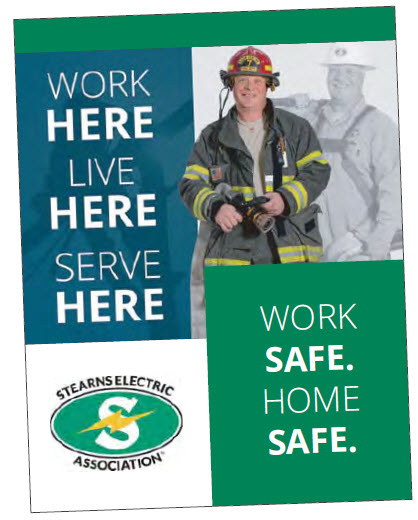 “Work Here. Live Here. Serve Here” and “Work Safe, Home Safe” is a two-part multimedia marketing campaign highlighting Stearns Electric Association’s strong community ties and commitment to workplace safety. The campaign targets employees and members. It features six employees, all community volunteers after work, dressed in co-op work and “after hours” attire. “Our employees work here, but they’re more than just employees,” says the co-op’s Whitney Ditlevson. “They are your neighbors and your friends. They are the people volunteering out in the community and making it a better place for us all to live and work.”
“Work Here. Live Here. Serve Here” and “Work Safe, Home Safe” is a two-part multimedia marketing campaign highlighting Stearns Electric Association’s strong community ties and commitment to workplace safety. The campaign targets employees and members. It features six employees, all community volunteers after work, dressed in co-op work and “after hours” attire. “Our employees work here, but they’re more than just employees,” says the co-op’s Whitney Ditlevson. “They are your neighbors and your friends. They are the people volunteering out in the community and making it a better place for us all to live and work.”
Contact: Whitney Ditlevson, communications and marketing supervisor, Stearns Electric Association, St. Joseph, Minnesota, wditlevson@stearnselectric.org. [/panel]
